Review GSM phone Alcatel OT 757
Package:
- Handset
- Charger
- Manual
The mobile phone Alcatel One Touch 757 is intended for youth most of all. The company has shown off main functions of the device and put them as inscriptions in order to attract the consumer's attention. There is a parading inscription VIDEO on the back cover near a camera and this is certain to mean that the phone camera is able to record small films. And the words 'MP3 melodies' are placed above a screen of the front panel and it implies assigning MP3 melodies as a ring tone. This function as well as the presence of the integrated camera is now in great demand among youth.

The handset design will interest mostly young people even though it is sober compare to that of some other Alcatel models - for instance OT 756. The two models are entirely identical to each other and the distinction lies in merely appearance. The body material is plastic with a silvery covering and there are white inserts on the sides. If you squeeze the device, the body will start creaking; still this is rather a cavil, for nothing like never occurs in case the phone is commonly used. Thanks to the fact the side inserts are slightly concave inwards, it is convenient to handle. The phone has the dimensions of the predecessor OT 756: 106x46x18.5 mm and 92 g. And this is no surprise, for we deal with the same device.
There is no control items on the sides. The bottom has a charger connector and a headset connector. There is a strap hole and a full-blown IrDA gap on the top.

The model has a TFT screen with the resolution of 128x160 pixels (31x38 mm). Although the specification claims that the screen shows 262K colours, it is not virtually visible. By sight the screen shows 65K colours at most and does not stand up the comparison with Motorola V600.

The phone keypad is made of transparent plastic and has a white substrate. If the keypad backlight is on, the keypad looks stylish and if not, the visual appeal dies since one has an impression as though it is a torn sheet with characters underneath the keys. The blue backlight consists of six diodes. This realisation looks designing but not functional, for the middle row of keys is not almost backlighted. Despite the close and terraced allocation, the number keypad is handy and mistypes occur very rarely.

A 4D button with an OK integrated has the shape of a silvery truncate disc. It gets out of the entire keypad style, but then attaches eccentricity to the handset.
The phone back cover has a camera lens buried into the body. The rest past is occupied with a lid under which there is a Li-Ion accumulator battery of the capacity of 950 mAh. According to the manufacturer, the device is able to work up to 250 hours in standby mode and to 9 hours in talk mode. In the condition of Moscow MTS network the handset has worked for 3 days in case of 40-45 minutes of talks and up to 30 minutes of using other functions a day. The output is quite good and if talking time decreases, OT 757 will work four or even five days.


Menu
The OT 757 has entirely inherited its software from ОТ 756 with no change. The main menu is represented in three variants. In the first case the screen shows three icons and the selected item, an animated image, is placed in the centre. The second variant runs as following: only the selected item, a colourful static image, is shown. In the third case all menu items are small icons and on the whole there are three columns of four icons. The showiest variant is the third one as images are carefully drawn and in the other cases the drawing is not so good.

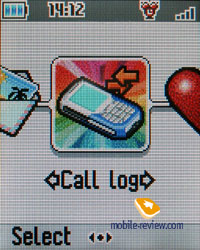
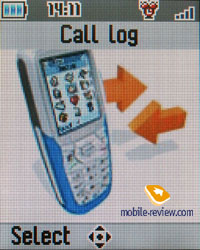
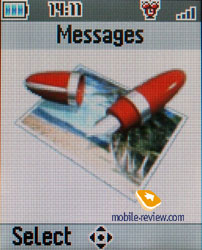
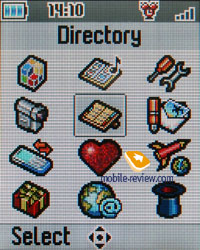
The phone has 8.4 Mb of internal memory that is dynamically distributed among applications.
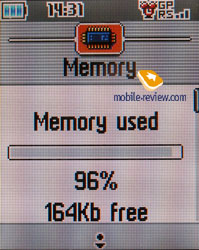
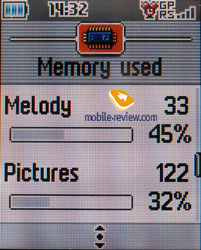
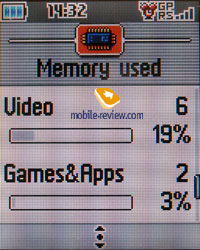

There is a quick navigation using number sequences.
The functions of the submenu are represented in lists and also grouped. The best way to explain this is using SMS, for example. Once you get to this menu, you can see a row of icons on the top and the banner 'Write a Message' highlighted by default. A message type is recalled from the list. In order to read sent or received messages you should tilt the joystick to the right or left so that the new list is displayed. At first site, such menu structure does not seems quite complicated, however you get used to it very quickly since it is logically arranged and discharges the menu that now lacks brimming functions as some models by other manufacturers have. Overall, the well organised menus of the phone leave a very good impression. Thus the image library has a bookmark for pictures and one for icons.
Phone book. The phone's memory is divided into several directories. There is a separate directory for contacts stored on a SIM-card and there are also three more folders by default: General, Business and Personal ones. The user can create the directories of his own; they serve as caller groups in a sense. You can assign a ring tone to each folder and you may not do it with single entries however.
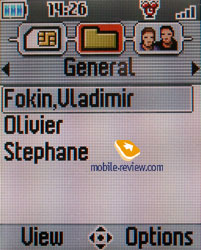
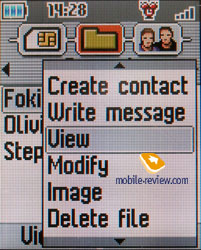
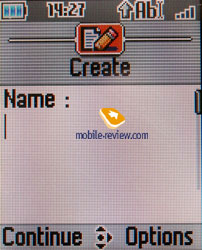
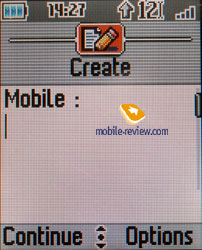
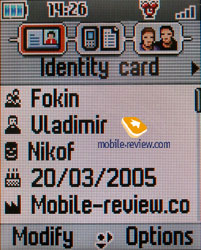
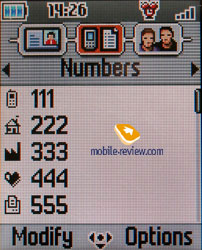
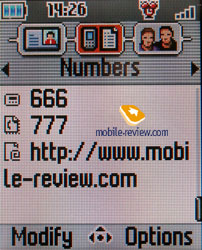
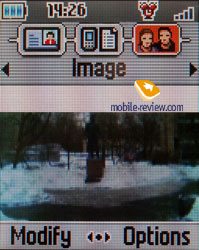
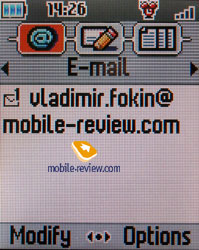

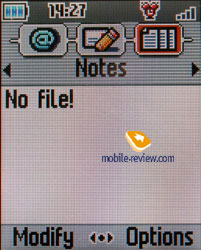
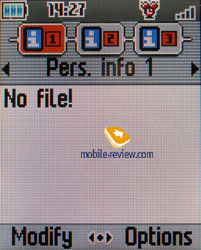

Any name has 26 fields to fill in, such as first and last names, up to seven numbers, two e-mail addresses, homepage address, alias, date of birth, company name, position, address, city, state, postal code, country, some special notes and four margins of additional information. The only drawback is that while adding a new entry you have to scroll all the fields in series, for you may not reach the necessary item at once. You can also assign voice tags to some contacts and then a voice recognition of those numbers is possible. The main list offers a search by the first letter.
It is possible to assign a picture or a video (preset or uploaded) to an entry. The phone supports files of JPG, GIF, aGIF, PNG, BMP standards. The supported video extensions are 3gp (H263/AMR, MPEG4), mp4.
There is no limitation on entry amount and everything depends on the spare memory capacity.
Messages. The phone can operate with SMS as well as with EMS and MMS. Manipulating any messages is common and poses no trouble. You may insert smiles, images, melodies and bookmarks of the wap-browser into a message body. It is also possible to create several slides for MMS and the size restriction is 100 Kb. A message could be sent to either one or several subscribers. There is both Russian and English T9 dictionary.
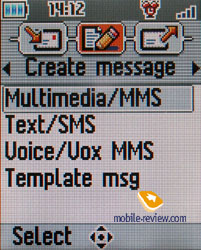
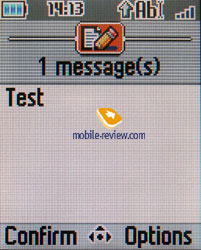
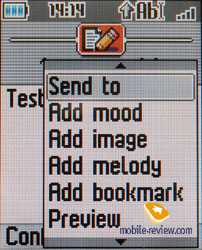
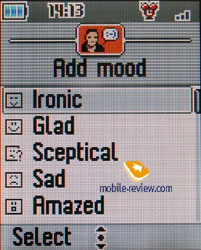
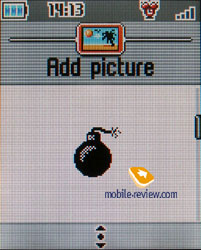
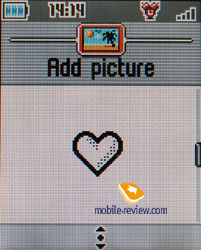
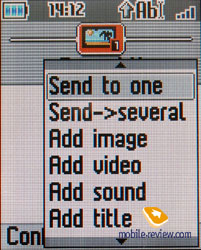
Personalisation. This holds almost everything concerned with device settings. The user can choose a melody and a ring type, adjust the menu appearance, set an image to the main screen, tune softkeys and others. The settings include a call type - vibra and signal altogether, first vibra and then signal, first signal and then vibra. All in all, there are many call type settings and you will rather select what you need.
As for the screen, you can set an image or a video, select a main menu representation and determine colour schemes. Besides, there is an interesting function Atmosphere (a set of images, an interface colour scheme and melodies). While viewing you not merely see an appearance variant but also hear a call melody corresponding to the selected variant. Of course, you may tune everything separately.

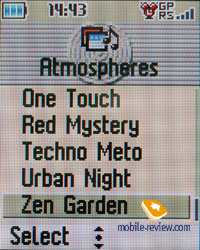
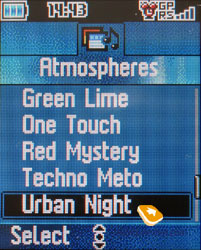
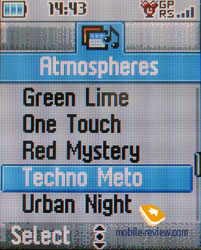
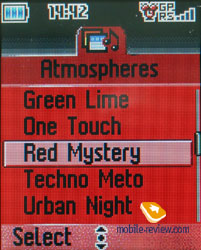
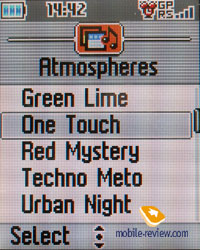
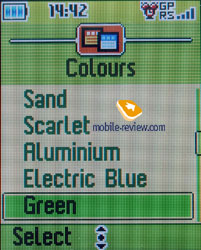
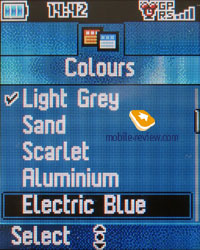
Call log. The call list includes missed, incoming, and dialled numbers. Here you can adjust all concerned with voice calls.
Fast access. It is possible to create your own menu for rapid access to necessary menu items, phone book contacts and Internet addresses.
Tools. This menu hides an organizer. Viewing is either weekly or monthly or in a list that shows all scheduled events. The monthly view is quite handy as events are sort out with dates, for instance, 14.03-20.03, 21.03-27.03 etc. An event could be determined as a meeting (date, time on and off, text note), a birthday (date and name) and a call (there are also reminders which has priority and time off).
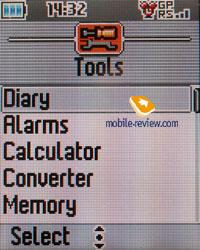
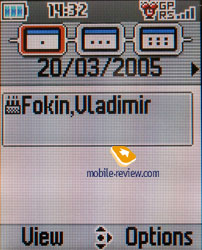
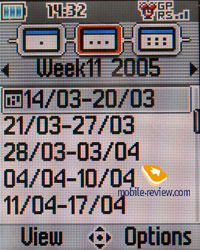
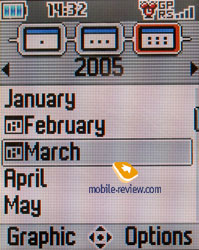
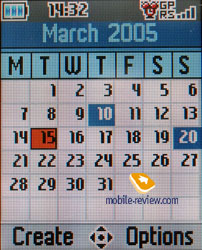
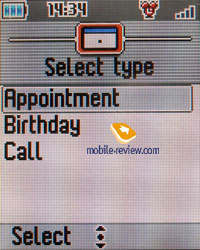
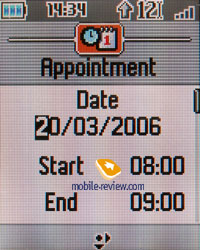
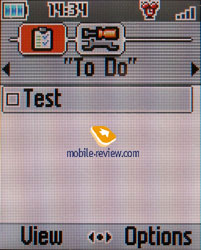
The device has two alarm-clocks, one is set to an exact date and the other is everyday. There is also a countdown timer.
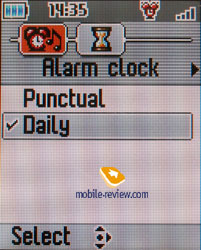
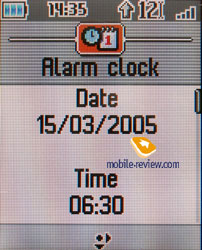
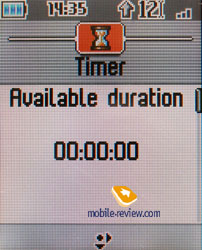
There is also a simple calculator and a unit convector.
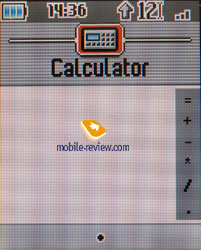
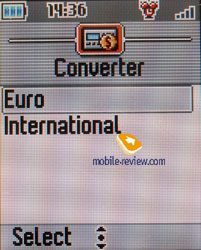
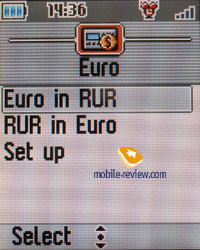
Besides, you can create your melody either by typing notes or by recording it with a dictaphone. The limitation is 60 seconds.
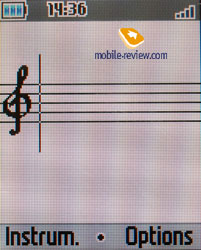
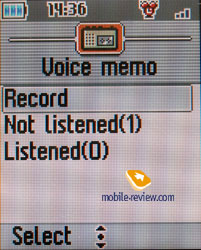

Voice commands could be assigned to a menu item.
The division Signals shows a list of meetings and notes which has an aliке and an alarm.

The IrDA can be activated here.
Tips & tricks. This menu contains pieces of advice on operating the device.

Services. There is an access to a SIM menu and an anchor to My One Touch the WAP-site.

WAP. The handset has a browser of 2.0 version that quite lacks peculiarity.

Games. The phone is supplied with two preinstalled games, one of them being SpeedDevils (race) and the other GylosTale (arcade). New games can be downloaded using WAP merely.
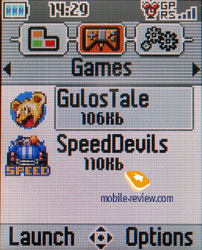
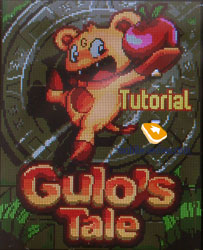
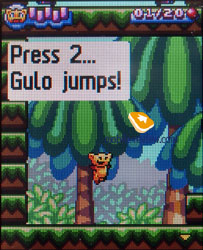
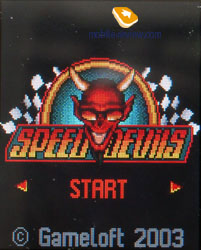

Multimedia Album. All pictures and melodies are represented here. The range of the pictures and melodies is very wide and in this sense, the phone is great. The selection of droll and funny pictures is such that you just do not know where to start choosing from. And there are several funny preset videos too.

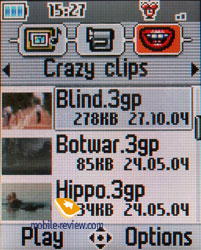


Camera. The pictures can be taken of the following resolution: 640x480, 352x288, 128x128, 64x64, 32x32, and 16x16 pixels. Besides, there is a big scale mode shooting for which the image is spread horizontally. In either case the picture format is JPEG and there are three types of compression quality (high, standard, and economy).
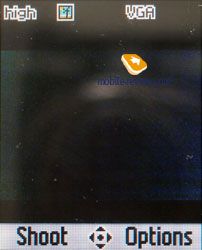
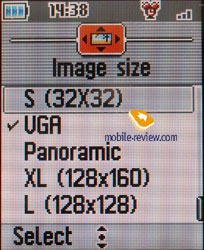
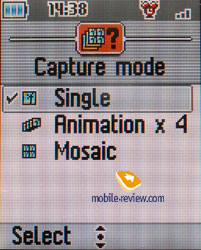
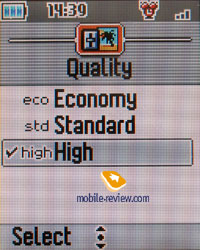
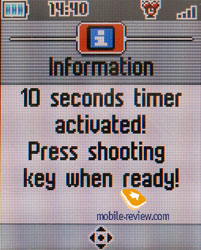
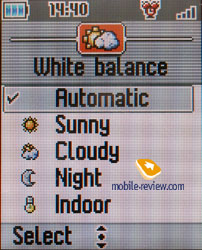

The phone screen serves as a viewfinder. The interface has been carefully elaborated so that while shooting you can change almost any image parameter by several pressures. The function of the number keys 1, 2, 3 is tuning the compression quality. The left softkey is there for the colour selection (colour picture, black-and-white, Sepia, Negative, Thin or contours).
The # key helps you to switch quickly the image resolutions; meanwhile the * key offers a set of several special modes. One of the modes is an option of creating a GIF file from four shots. This means that you take four sequential shots, which then immediately turn into an animation in your phone. Here a restriction consists of the only resolution of 128x128 pixels that the developers found mostly convenient to save the phone memory. The function is truly unique and adds to the phone's exclusivity especially till other manufacturers have nothing alike to offer yet.
Another special shooting mode is the mosaic. This mode allows you to take four pictures (32x32 pixels) and then pleat them into a complete image (128x128).
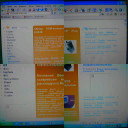
The phone is equipped with a timer for shooting with a delay. There is an Exposure adjustment and an illumination level determination; although light conditions are determined automatically by default, you can identify them manually. In most cases the automatic Exposure is sufficient.
You can choose default folders where the pictures will be stored and taken pictures could serve as a screensavers or sent with MMS.
You may use frames for the pictures of the resolution of 128x128 pixels. This is a sort of an effect when you border the picture with a frame while shooting. Another exceptional feature of the phone is that you can download the frame files (PNG format) from a PC and this means that you can create special effects of your own. Not a single phone has a similar function although the frames are used by many of them.
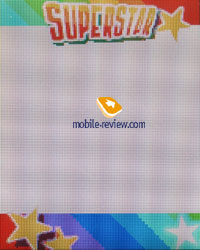

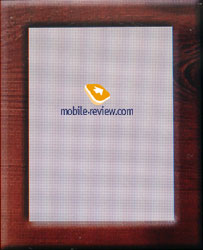
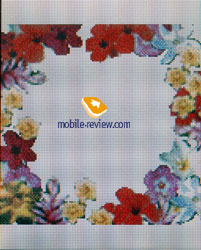
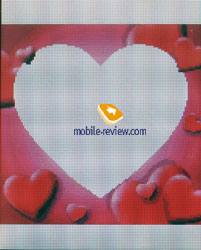
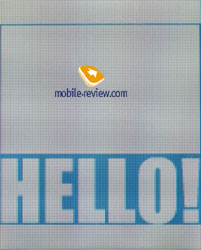
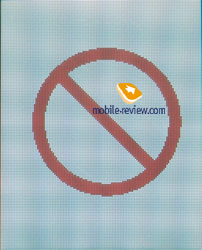
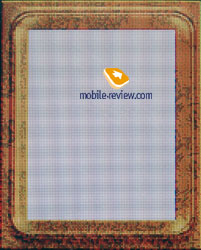
The handset has an 8x digital zoom - you should just draw the joystick away from you. The zoom function is followed with the sound resembling that of a lens when a digital camera is zooming; this is very nice.
Photos look quite good on the phone screen and they are also satisfactory on a PC screen. The main shortcoming lies in that the edges are blurred.

Sample photo outdoors, 640x480, 55.1 KB, JPEG
Sample photo outdoors, 640x480, 40.7 KB, JPEG
Sample photo outdoors, 640x480, 42.3 KB, JPEG
Sample photo outdoors, 640x480, 40.7 KB, JPEG
Sample photo outdoors, 640x480, 42.3 KB, JPEG
Video is recorded as 3GP; the size restriction is 93 Kb or 9 seconds (for MMS). You may record videos until the entire memory is used.
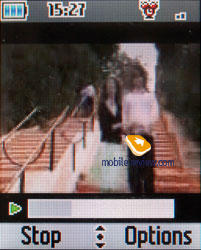
A video film is shown full-screen; while a playback there is an evident slight brake - the phone processor must not cope with the load. Films are of good quality.
Impressions
The connection quality poses no problem; the loudspeaker volume and the microphone sensitivity suffice for talking under any condition - either an office or a noisy street. The range of preset melodies is rather wide, nevertheless if MP3 is possible to be assigned as a ring tone, there is little need of the preinstalled melodies. The alert volume is sufficient and it is heard very well even from under winter clothes. Yet the vibracall is modest in power and sometime you can miss it. The loud-speaking communication is carried out at a rather good level.
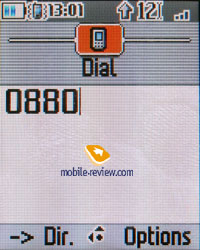
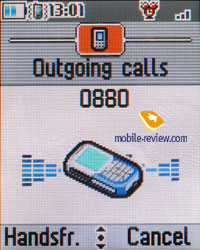
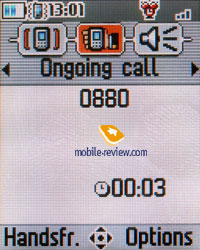
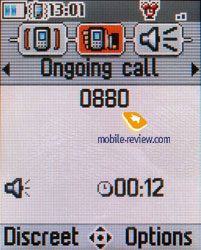



The phone has proved a quite successful one even though it is just a variation of Alcatel OT 756 with another body. I rather dislike the keypad substrate, for it should have been done more carefully. This model is a real boon for those who talk little since it allows leaving a charger for a long time. The presence of the full-blown IrDA gap, MP3 files playback, and video recording warrant completely OT 757's cost of 200 USD.
No comments:
Post a Comment